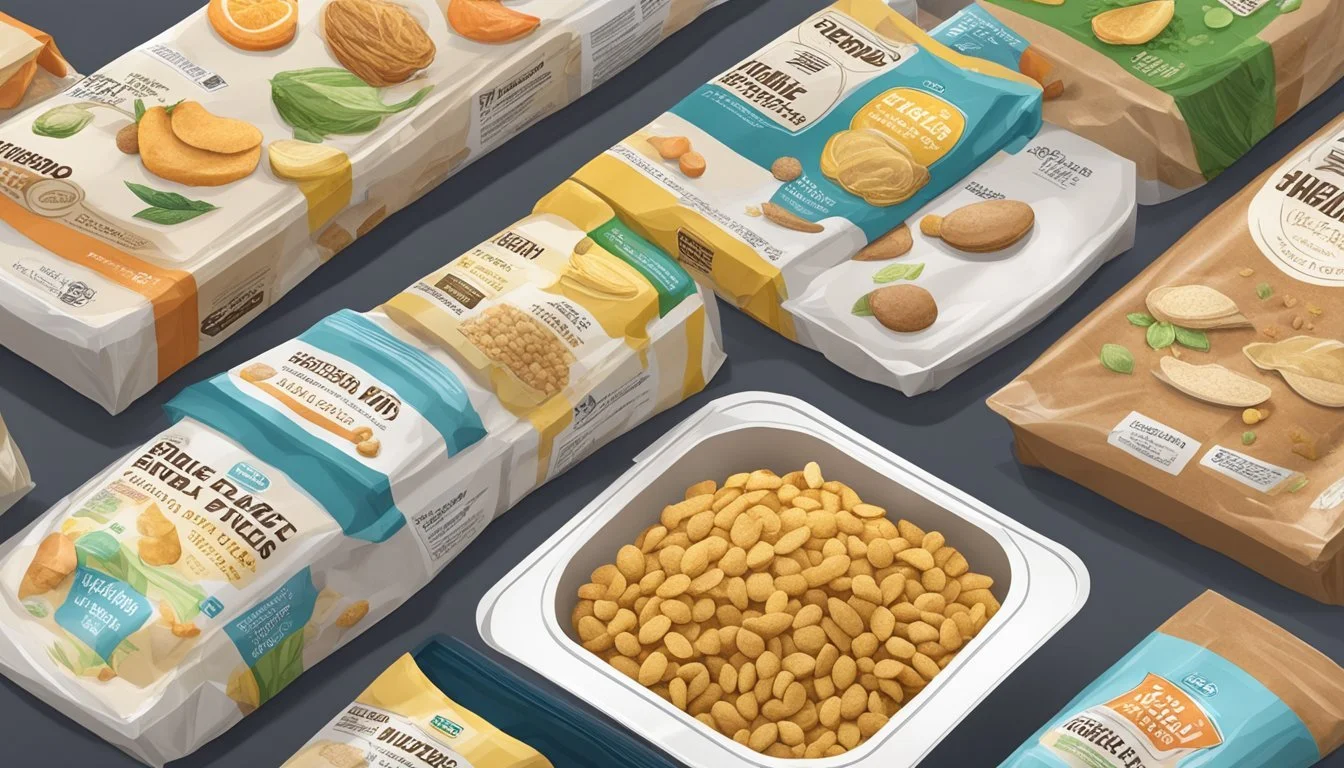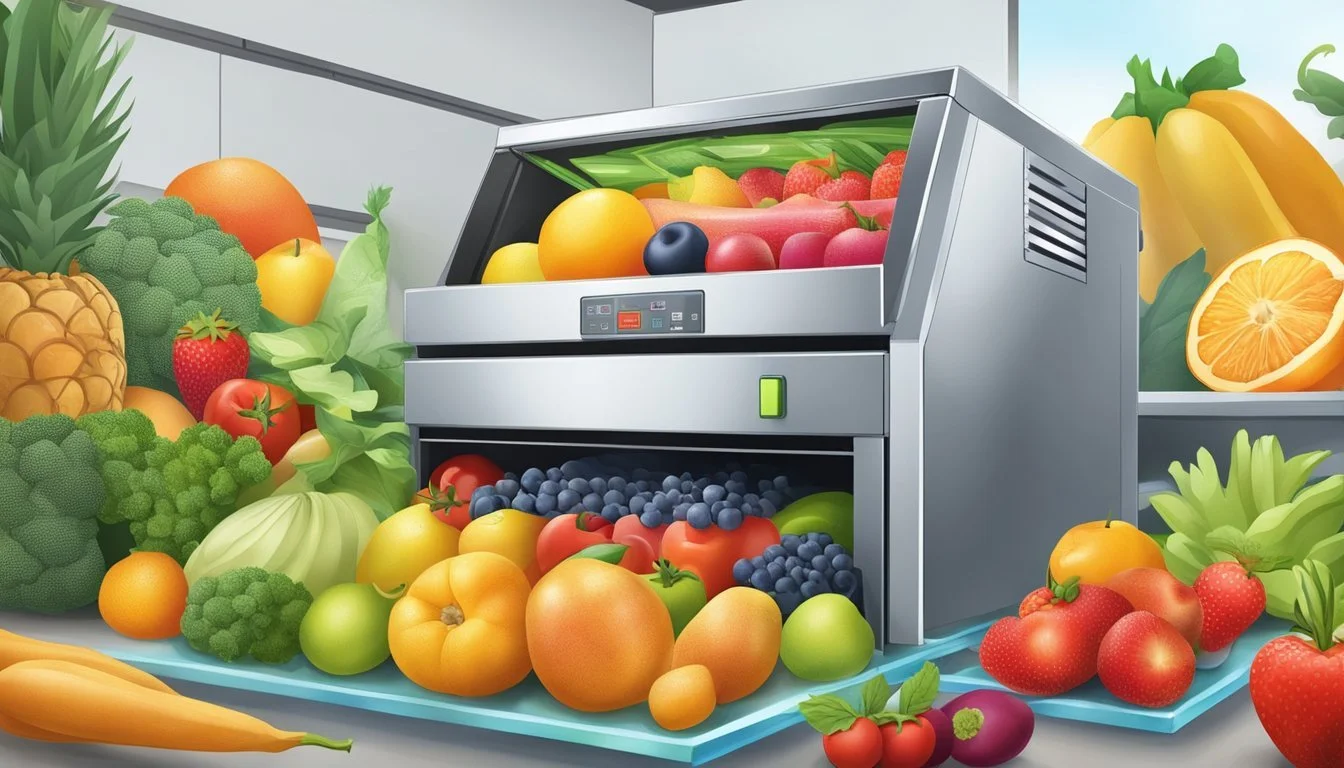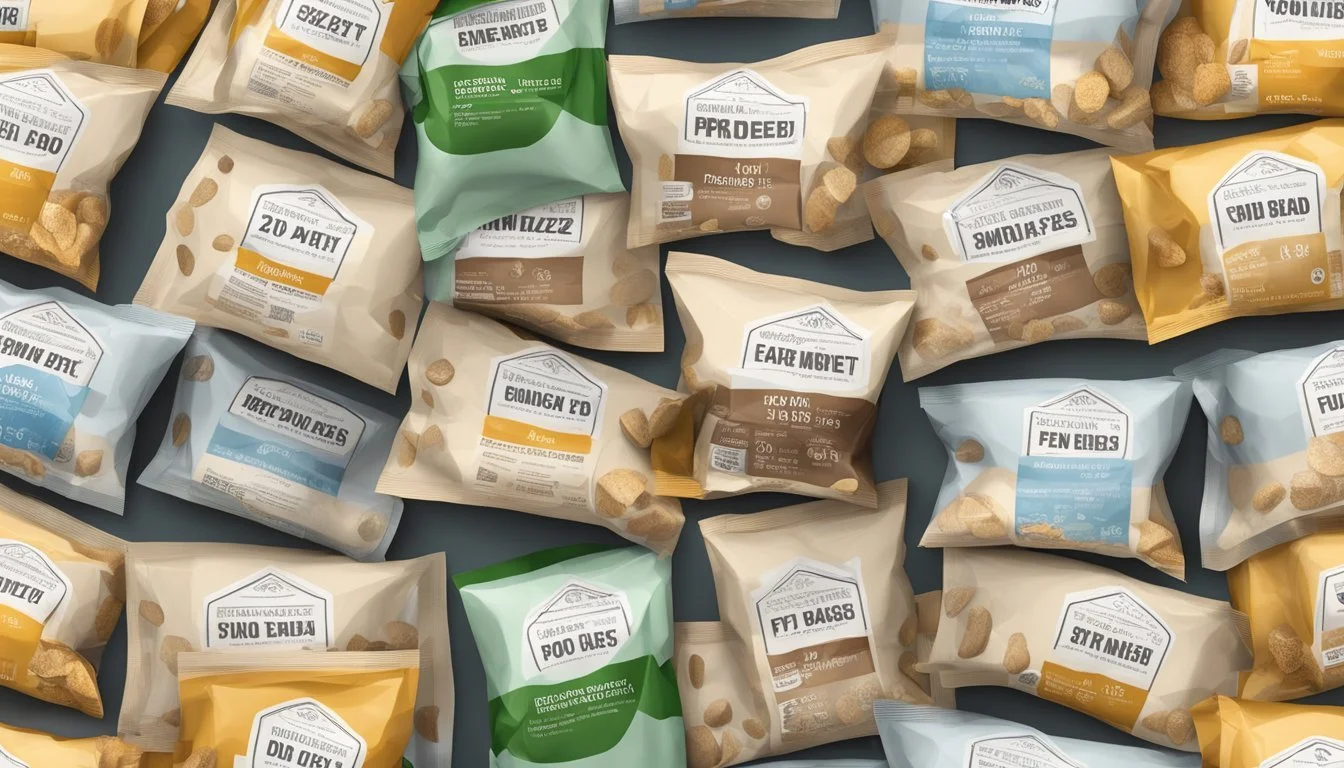Does Freeze-Dried Food Go Bad?
Shelf Life and Storage Tips
Freeze-dried food has garnered significant attention due to its remarkable longevity and quality. This preservation method, which involves freezing the food and then removing its moisture content through sublimation, allows the food to remain consumable for an extended period. While freeze-dried food can indeed last for many years, its quality in terms of taste, texture, and nutritional value may gradually diminish over time.
The shelf life of freeze-dried food is often cited to be between 25 to 30 years when stored in optimal conditions—cool, dry, and in airtight containers. However, once exposed to moisture and oxygen upon opening, it is advisable to consume it within a few weeks to maintain its quality. Proper storage is crucial in preserving the flavor and overall quality of freeze-dried foods.
Despite its extended shelf life, freeze-dried food is not entirely immune to spoilage. Factors such as the type of food, packaging, and storage conditions play a significant role in determining how long the food will remain at its best. When preserved well, freeze-dried food provides a reliable option for long-term food storage, making it an invaluable asset for emergency preparedness and outdoor adventures.
Understanding Freeze-Drying
Freeze-drying is a method that preserves food by removing its water content, extending its shelf life while retaining quality, nutritional value, taste, and texture.
The Freeze-Drying Process
Freeze-drying, or lyophilization, involves three main stages: freezing, primary drying, and secondary drying. First, the food is frozen, which helps preserve its structure.
Next, in primary drying, the temperature is lowered further under a vacuum, causing the ice to sublimate. Sublimation is the process where ice transitions directly from solid to vapor, skipping the liquid phase. This step removes about 95% of the water content.
Lastly, secondary drying is performed to remove any bound moisture. This step further reduces water content to as low as 1-4%, ensuring the food is thoroughly dehydrated.
Benefits of Freeze-Drying
One of the significant advantages of freeze-drying is its ability to extend shelf life. Freeze-dried foods can last anywhere from 25 to 30 years when stored correctly, making them ideal for long-term storage.
Additionally, freeze-drying maintains the nutritional value and taste of the food. Unlike other dehydration methods that use heat, freeze-drying occurs at low temperatures, preserving delicate nutrients and ensuring that the food's texture and flavor remain unchanged.
The process also reduces the weight of the food, as most moisture is removed, making it lightweight and easy to transport. This is particularly beneficial for camping or emergency preparedness.
Factors Affecting the Shelf Life of Freeze-Dried Food
Proper storage conditions are crucial for maximizing the longevity of freeze-dried food. Key factors include moisture, oxygen, light, and temperature.
Role of Moisture and Oxygen
Moisture removal is central to freeze-drying. However, even minor residual moisture can threaten shelf life. Higher moisture levels can accelerate microbial growth, leading to spoilage. Oxygen is another critical factor. Exposure to oxygen can cause food to oxidize, affecting taste and nutritional value.
Oxygen absorbers are often used to extend shelf life. These packets reduce the oxygen inside airtight containers, helping preserve the food for years.
Proper packaging with airtight seals is vital. Ensure the storage area maintains low humidity and use oxygen absorbers for optimal results.
Impact of Light and Temperature
Light exposure can degrade food quality over time. Ultraviolet light, in particular, can break down vitamins and affect flavor. Store freeze-dried food in dark places or use opaque containers to limit light exposure.
Temperature also plays a significant role. Higher temperatures can cause moisture buildup inside packaging and hasten spoilage. Freeze-dried food should be stored in cool conditions, ideally below 75°F (24°C), to maintain a long shelf life.
Both factors, light and temperature, should be consistently controlled to optimize the longevity of freeze-dried foods, potentially allowing safe consumption for up to 30 years.
Proper Storage Techniques
Properly storing freeze-dried food ensures its longevity and maintains its quality. Essential aspects include selecting suitable containers, maintaining a cool, dry environment, and using oxygen absorbers or desiccants.
Choosing the Right Containers
Selecting the right containers is crucial for long-term storage. Airtight containers are a must to prevent moisture from entering. Popular choices include Mylar bags and vacuum-sealed jars, both offering excellent protection.
Mylar bags are cost-effective and can be sealed with a heat sealer or an impulse sealer. Vacuum-sealed jars provide a tight seal without any air pockets. Whether storing food for a few months or several years, ensuring your containers are airtight is essential to keep the freeze-dried food safe.
Importance of Cool, Dry Places
Storing freeze-dried food in a cool, dry place significantly extends its shelf life. The ideal temperature range is between 37°F and 70°F. Some recommendations suggest aiming for 37°F to 40°F for optimal preservation. A consistent temperature helps prevent the food from spoiling.
A dark place is also preferable to avoid exposure to light, which can degrade the quality of the food. Suitable locations include a basement or a cool pantry. Avoid areas near heat sources or those that experience frequent temperature fluctuations.
Oxygen Absorbers and Desiccants
Oxygen absorbers are vital in preventing food oxidation. Placing an oxygen absorber in your airtight container removes oxygen, which can degrade food quality and allow spoilage. This is particularly important for achieving a long shelf life of up to 30 years.
Desiccants help maintain low humidity levels in containers. They absorb residual moisture, ensuring the environment remains dry. Combining oxygen absorbers and desiccants offers double protection, keeping the food fresh and safe for extended periods.
Ensuring these storage techniques are followed meticulously will help maximize the lifespan of freeze-dried foods, making them a reliable component of your long-term food storage strategy.
Signs That Freeze-Dried Food Has Gone Bad
Recognizing the signs of spoilage in freeze-dried food is crucial for maintaining food quality and safety. Specific indicators include noticeable changes in color and texture, off smells and flavors, and the presence of mold and bacteria.
Changes in Color and Texture
A clear sign that freeze-dried food has spoiled is a significant change in color. Fresh freeze-dried fruits, vegetables, and meats should retain a somewhat vibrant, natural color. Discoloration, such as dark spots, yellowing, or a dull appearance, often indicates degradation.
Changes in texture are also telling. Normally, freeze-dried food should be dry and brittle. If the texture feels mushy, excessively hard, or rubbery, it’s a signal that the food has absorbed moisture or has been exposed to extreme temperature changes, suggesting spoilage.
Off Smells and Flavors
Off odors are a direct indication that freeze-dried food has gone bad. Fresh freeze-dried food should have a neutral or slightly sweet smell, depending on the type. Any strong, rancid, sour, or moldy smell suggests spoilage and possible bacterial growth.
Flavors can degrade even if the food appears visually acceptable. Tasting a small amount (if there are no apparent spoilage signs) can sometimes confirm whether the food has maintained its quality. An unusual or off taste signifies that it is no longer safe to consume.
Presence of Mold and Bacteria
Mold and bacteria are the most critical indicators of spoilage. Mold growth, typically characterized by fuzzy, cloud-like spots in colors such as white, green, or black, is a clear sign the food is unsafe.
Bacterial contamination may not always be visible but can be inferred from other signs like off smells or slimy textures. If freeze-dried food has absorbed moisture, it creates an environment where bacteria can thrive, compromising the safety of the product.
These signs should always prompt the disposal of the affected food to prevent potential health risks. Understanding and identifying these indicators helps ensure that freeze-dried food remains a safe and reliable food source.
Maximizing the Benefits of Freeze-Dried Food
Freeze-dried food offers numerous advantages for emergency preparedness and outdoor activities. Its long shelf life, lightweight, and ease of preparation make it an excellent choice for these uses.
For Emergency Preparedness
When considering food for emergency situations, freeze-dried food stands out due to its extended shelf life and minimal storage requirements. These foods can last for months or even years without refrigeration, making them ideal for long-term food storage. The process of lyophilization retains most of the nutritional quality, ensuring that essential nutrients are preserved over time.
Storage is straightforward—freeze-dried foods require only a cool, dry place. This simplicity is a significant advantage in emergency preparedness, where ease of storage and access can be crucial. Additionally, the lightweight nature of freeze-dried food allows for the easy transportation of large quantities, which is particularly useful if evacuation becomes necessary.
Rehydration is typically quick and easy, requiring only water. This reliability in diverse conditions ensures that even in an emergency, meals can be prepared with minimal effort. The versatility of freeze-dried meals, ranging from fruits and vegetables to complete meals, ensures a balanced diet during emergencies.
For Outdoor Activities
For outdoor enthusiasts, including campers and backpackers, freeze-dried food offers unmatched convenience and practicality. These foods are exceptionally lightweight, making them ideal for activities where reducing pack weight is crucial. The dehydration process removes up to 99% of moisture content, significantly cutting down on weight and volume.
Cooking during outdoor activities can be simplified with freeze-dried meals. Many products are designed for quick rehydration, often involving only hot water. This ease of preparation means less time cooking and more time enjoying the outdoors.
Furthermore, nutritional quality is maintained in the freeze-drying process, ensuring that outdoor enthusiasts receive the necessary sustenance. The compact nature of freeze-dried foods means more can be packed into small spaces, optimizing storage in backpacks or gear. This combination of lightweight portability, easy preparation, and nutritional retention makes freeze-dried food an excellent choice for any outdoor adventure.
Comparing Freeze-Dried Food with Other Methods
When comparing freeze-dried foods to other preservation methods, significant differences arise in areas such as shelf life, nutritional value, and the types of foods that can be preserved.
Freeze-Dried vs. Dehydrated Food
Freeze-drying removes about 98% of moisture from food, which significantly extends its shelf life. This method creates an environment where bacteria, yeasts, and molds cannot survive easily, allowing freeze-dried foods to last up to 25 years when stored properly.
By contrast, dehydrated foods typically lose around 90-95% of their moisture. This results in a shorter shelf life compared to freeze-dried foods—usually between 1 to 5 years.
In freeze-drying, the nutritional value is generally well-preserved because the process uses low temperatures, which help retain vitamins and minerals. Dehydration involves higher temperatures, which can lead to greater losses of heat-sensitive nutrients like vitamin C and certain B vitamins.
Freeze-drying is versatile, accommodating a wide variety of foods, including dairy products, fruits, vegetables, and even cooked meals. Dehydration is more limited and best suited for fruits, vegetables, and meats with low water content.
Canned Goods Versatility
Canning preserves food by sealing it in airtight containers, often with added liquids, and then heating to destroy harmful microorganisms. Canned goods usually have a shelf life of 1 to 5 years when stored correctly.
The process can affect the texture and flavor of foods, making them softer and sometimes altering their taste due to the extended heating process. However, the nutritional value generally remains intact, though some vitamins may be lost during the heating phase.
Canned foods are incredibly versatile. They range from soups and stews to fruits and vegetables, providing a convenient option for long-term storage. Unlike freeze-drying, canning allows for the preservation of high-water-content foods and liquids, giving it a unique advantage in certain scenarios.
Choosing and Using Freeze-Dried Food
When choosing and using freeze-dried food, it's essential to focus on quality, proper cooking techniques, and sound storage practices to maximize nutritional value and taste.
Selecting High-Quality Options
Choosing high-quality freeze-dried foods can make a significant difference. It's important to check for reputable brands that list minimal additives and preservatives.
Look for products with clear labeling on nutritional value, color, and taste. Vegetables, fruits, and meats that maintain their original shape and color generally indicate a good freeze-drying process.
Consumers should prioritize items packaged in vacuum-sealed bags or airtight containers to extend shelf life. Comparing reviews and customer feedback can also provide insight into the product's quality.
Tips for Cooking and Preparation
Freeze-dried foods can shine in a variety of recipes, from snacks to full meals. When rehydrating, follow the manufacturer's instructions carefully, as different foods require varying amounts of water and time to rehydrate properly.
Meats might need hot water and a longer soak, while fruits and vegetables often rehydrate quickly. Experimenting with different recipes can help discover new meal ideas. For baked goods, freeze-dried fruits can be added directly without rehydration.
Cooking with freeze-dried foods allows for flexibility and can enhance the flavors in soups, stews, and casseroles.
Storing and Handling After Opening
Proper storage after opening is vital to maintaining the quality of freeze-dried foods. Once opened, store the food in airtight containers, mason jars, or resealable ziplock bags to prevent exposure to moisture.
Using vacuum-sealed bags can extend the freshness even further. It's best to keep opened products in a cool, dark place; if refrigeration is available, it can also help preserve the food.
Labeling containers with the opening date adds convenience to monitoring freshness. Regularly checking the stored items for any changes in texture or smell is essential to ensure safety and quality.







